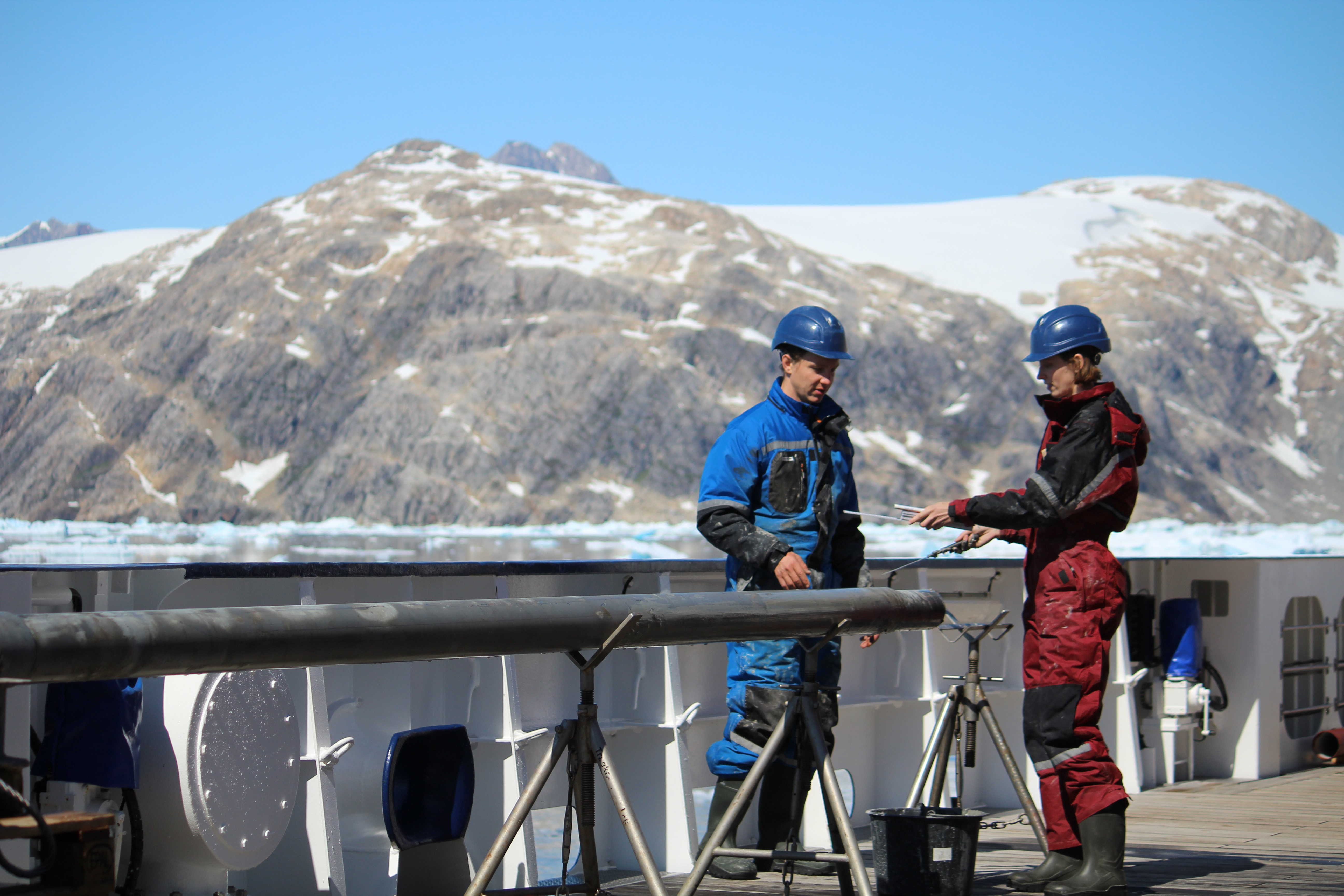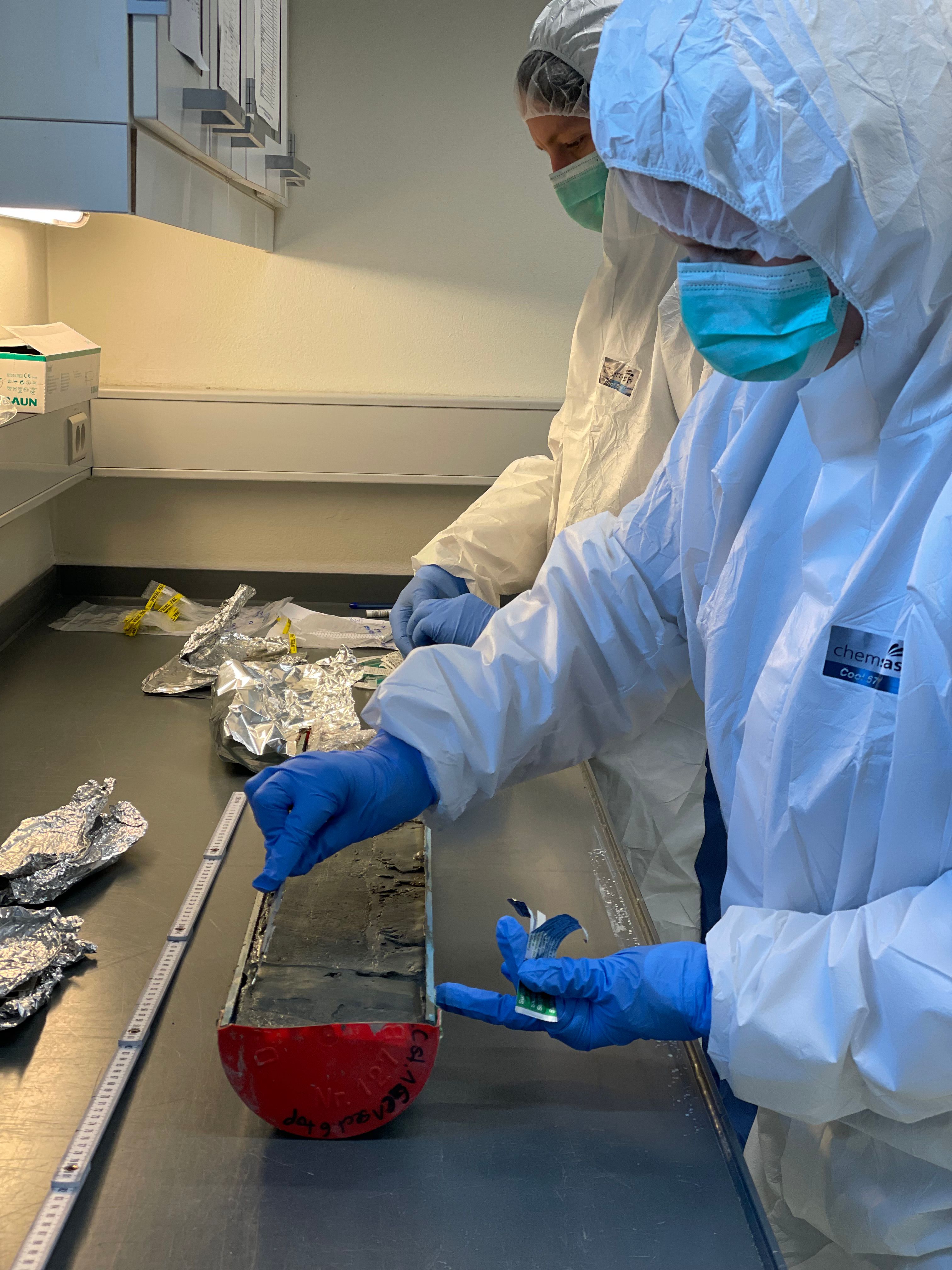What DNA from the bottom of the sea can tell us about the history of marine mammals in the Arctic
Published in Ecology & Evolution

A Leap from the Tropics to the Arctic
Four years ago, during a PhD interview, I was asked why I wanted to switch from tropical research to Arctic ecosystems. Having just returned from four months of exciting fieldwork in Panama, I hadn’t really figured that out myself. I told my soon-to-be supervisors that it didn’t matter to me whether I worked in the tropics or the Arctic, as long as the research addressed some large-scale ecological puzzle. That answer—or maybe something else in the interview—must have been convincing enough, because not long after, I found myself diving into the world of marine mammals inhabiting the icy seas surrounding Greenland. The transition really challenged my perspective.
Until then, I had focused on how environmental changes over the past few years affected the distribution of potentially invasive fish species in the Panama Canal. Now, I set out to investigate how marine mammals responded to climatic shifts over thousands of years—a completely different temporal scale, and a whole new way of thinking about ecological change.
A new approach to unlock the history of marine mammals in the Arctic
The world of marine mammals is changing, especially in the Arctic where global warming is causing drastic reductions in sea ice. Seasonal sea ice is a key component of Arctic marine ecosystems and, perhaps surprisingly, it sustains a productive habitat for many organisms that form the base of the Arctic food web. A number of marine mammal species, such as bowhead whales and ringed seals, are evolutionarily adapted to these sea ice environments. While several studies have tracked recent changes in their distribution and abundance, they don’t show how species responded to environmental changes in the past, which is crucial if we want to understand whether and how organisms can adapt over longer timescales.
So far, such insights have relied on fossil remains, which are rare—particularly in Greenland. Sedimentary ancient DNA has proven useful in reconstructing past terrestrial ecosystems, and here we apply the same approach to marine sediment cores. This allows us to uncover how marine mammals responded to past environmental shifts, ultimately improving our understanding of their resilience to ongoing global warming.
Genetic traces archived in marine sediments
In this project, we set out to analyze ancient DNA from marine sediments. When you tell someone unfamiliar with ancient DNA about the field, they’re usually surprised that it’s even possible to extract useful genetic information from bones and teeth that are thousands of years old. But analysing ancient DNA from sediments is a whole different story. Unlike fossil DNA, the DNA we’re working with isn’t part of a skeleton—it consists of individual molecules in the water that sink to the bottom and bind to minerals in the sediment. To reconstruct which species were present at different points in time, a key assumption needs to be met: the sediment layers form a submerged archive, with deeper layers representing older DNA and more recent layers representing younger DNA. So far, so good—but the big question remains: can we actually retrieve enough DNA from individual marine mammals to make meaningful ecological inferences?
On a quest for ancient mud
To test this, we investigated four marine sediment cores, each up to six meters long, collected with heavy-weight metal tools like gravity and piston corers. Our cores came from one of the most isolated regions on Earth—the icy coastline of Northern Greenland—which can only be accessed by large research vessels such as the Swedish icebreaker Oden. During my PhD, I had the chance to take part in a research expedition to Greenland, alongside a team of scientists and crew from eleven different countries. I spent six weeks collecting marine sediment cores in incredibly beautiful landscapes—a truly special experience that made me appreciate just how much work goes into every study of Arctic ecosystems.

Once we successfully retrieved the sediment cores, we cut them into one-meter sections, which we then carefully transported back to specialized laboratories for analysis. Ancient DNA labs are not typical laboratories; to prevent contamination from modern DNA, they are equipped with special air filters and UV lights, and researchers wear full protective clothing—much like forensic teams at a crime scene.

Connecting past, present and future of marine mammals in the Arctic
The DNA from our four marine sediment cores provides a detailed record of marine mammal occurrences spanning up to the past 12,000 years. This is the first study to document the presence of individual marine mammal species over time using DNA extracted from marine sediments. Because our approach does not depend on the preservation of fossils, it allows for a much more precise reconstruction of when marine mammals first accessed newly available habitats along the coasts of Greenland—and it can be applied to other groups of organisms as well. Our findings show that warmer air temperatures, along with shifts in ocean currents and sea ice conditions during the Holocene Thermal Maximum (~10,000–5,500 years ago), led to a northward expansion of temperate and low-Arctic species. Notably, similar northward shifts have already been observed in several marine mammal populations around Greenland today.
As the Arctic continues to warm rapidly, these long-term ecological perspectives are essential for predicting future species responses and guiding effective conservation strategies—especially given the deep cultural and subsistence importance of these species to local and Indigenous Arctic communities.
Follow the Topic
-
Nature Communications

An open access, multidisciplinary journal dedicated to publishing high-quality research in all areas of the biological, health, physical, chemical and Earth sciences.
Related Collections
With Collections, you can get published faster and increase your visibility.
Women's Health
Publishing Model: Hybrid
Deadline: Ongoing
Reproductive Health
Publishing Model: Hybrid
Deadline: Mar 30, 2026


Please sign in or register for FREE
If you are a registered user on Research Communities by Springer Nature, please sign in